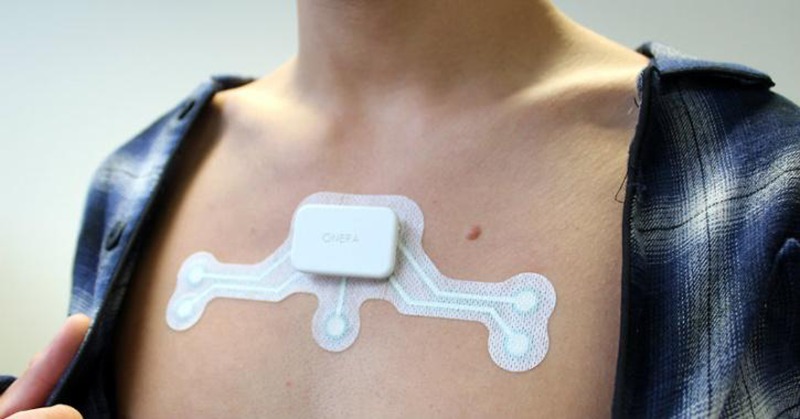Sleep apnea is a potentially serious sleep disorder in which breathing repeatedly stops and starts. People suffering from sleep apnea wake up multiple times every night. If you snore loudly and feel tired even after a full night’s sleep, you might have sleep apnea. Close to one billion people around the world suffer from this condition.
Read more Itamar Medical’s WatchPAT 300 is a Simple and Reliable Home Sleep Apnea Detection System
To monitor sleep apnea more easily at home, medical device manufacturers have developed various wearable devices that measure breathing using resistive bands around the chest or abdomen, film-based sensors, and microelectronic systems.
Now, Onera Health, a startup headquartered in Silicon Valley, with R&D offices in the Netherlands, has developed a wearable chest patch that relies on machine learning and bioimpedance measurements to detect sleep apnea.
As the device is worn on the chest, and is fairly unobtrusive, it has the potential to allow for sleep apnea diagnosis outside of sleep clinics. This may improve the quality of diagnoses, as patients will be able to perform testing under normal conditions in their own bed, reports MedGadget.

The wearable patch is tinier than a credit card. It measures electrical signals passing through the body (known as bioimpedance) and machine learning algorithms to effectively predict sleep apnea attacks.
The device is developed by a group of researchers at imec and Ghent University, who had previously designed a device that measures bioimpedance. The researchers sought to explore whether the technique could also be used to monitor the breathing patterns of people with sleep apnea.
Read more Alphabet’s Verily Partners Up With ResMed to Study Sleep Apnea
“When a patient breathes, air enters the lungs and the chest expands, resulting in impedance changes in the chest,” explains Tom Van Steenkiste, a researcher involved in the study. “By measuring bioimpedance on the chest… respiration can be estimated.”
The patch has just been successfully trialed in 25 patients and the results show that it is about as accurate as automatic scoring using a traditional polysomnography respiration channel.









